Is your Analysis Built on Bad Location Data?
December 3, 2019

Location data is rife with problematic location signals. Some may argue that location signal quality is only an issue with location data sourced from the advertising bid stream, but that’s simply not true: SDK-sourced location data also contains fraudulent device and location information. Moreover, not all valid location signals have equal precision. For businesses using – or planning to use – location data to inform their business decisions, it’s essential to work with only valid data so that the results of any analysis are sound.
Gravy Analytics’ AdmitOne processing engine, with location data forensics, validates and tags every single location signal, to ensure that our clients are able to access and use only the location data that is appropriate to their analysis. Why does this matter?
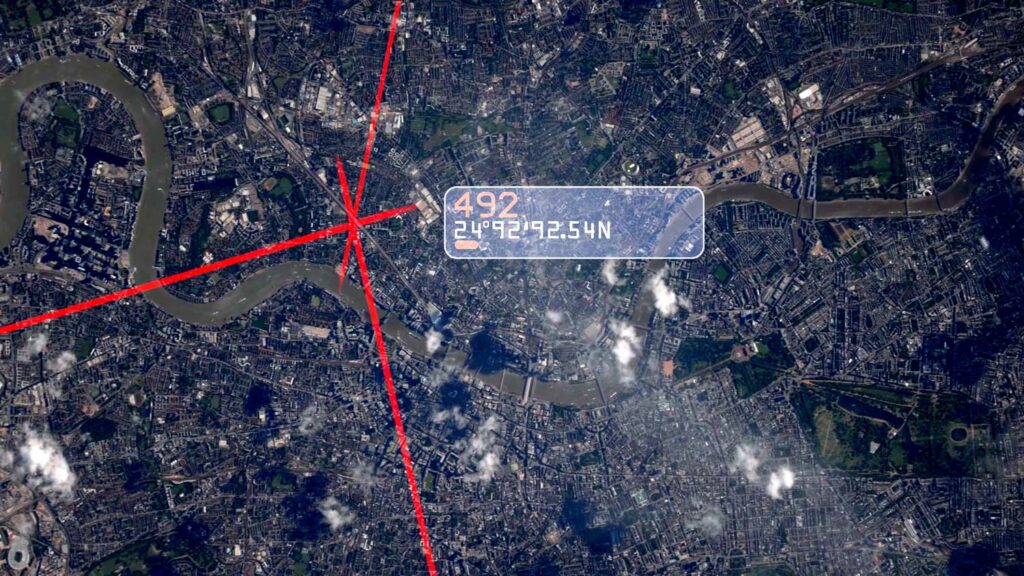
A Case Study
To illustrate, Gravy Analytics recently studied foot traffic patterns at a shopping center in northern California. The client, a property manager, wanted to understand overall foot traffic patterns at the center and learn more about its customers, such as how far they traveled to visit the mall.
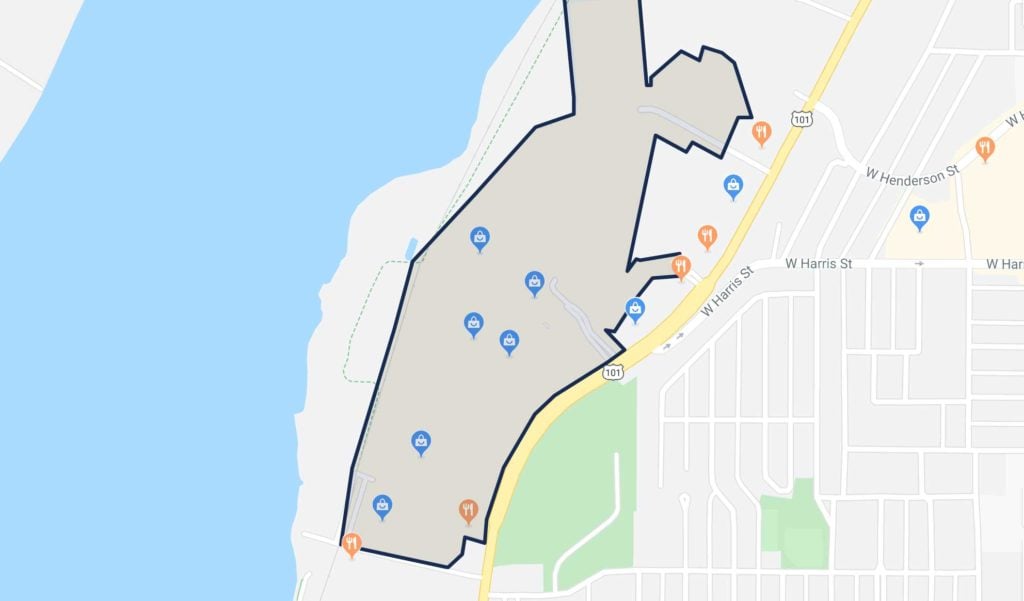
Like many shopping centers, this one is designed for convenience: the center includes multiple stores, offers ample parking in its surrounding parking lots, and is conveniently located near a major access highway (Figure 1). However, accurately measuring foot traffic data at places near highways can be challenging.
Location signals from driving devices are often lower in accuracy, which means they can appear adjacent to a road – or, in this case, inside a shopping mall – instead of on it. While these signals are valid and appropriate for use in traffic studies or city-wide analysis, they do not reflect mall foot traffic. For this reason, signals from driving devices must be filtered out before any analysis begins.
Gravy performs many different quality checks during location data processing. For this exercise, 85.12% of devices and 79.86% of signals passed all checks. Therefore, nearly 15% of devices and over 20% of signals did not pass our quality checks, including those from driving devices and spoofed locations or devices. (Figure 2).
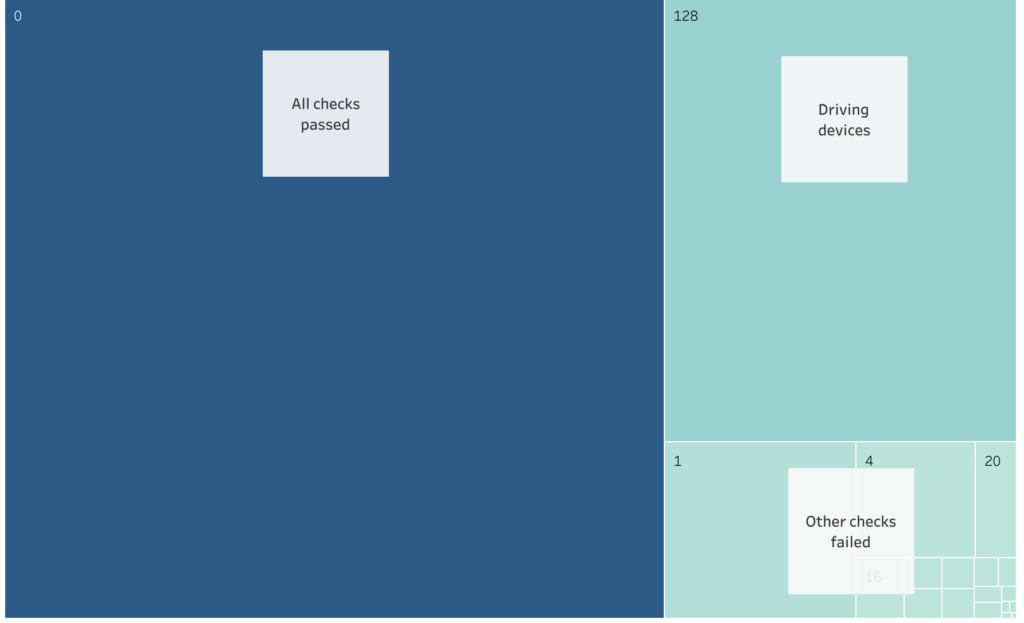
What Difference Does the Data Make?
Using only verified signals – those that passed all checks – to conduct this foot traffic trend analysis, Gravy determined that shopping center foot traffic has been on the decline since the beginning of 2019. We then re-ran our analysis to see what would happen using all location signals, and mall foot traffic appeared to go up. Without using only verified signals, an analyst would erroneously conclude that foot traffic to the mall had increased in 2019 when, in fact, it was really going down. (Figure 3).
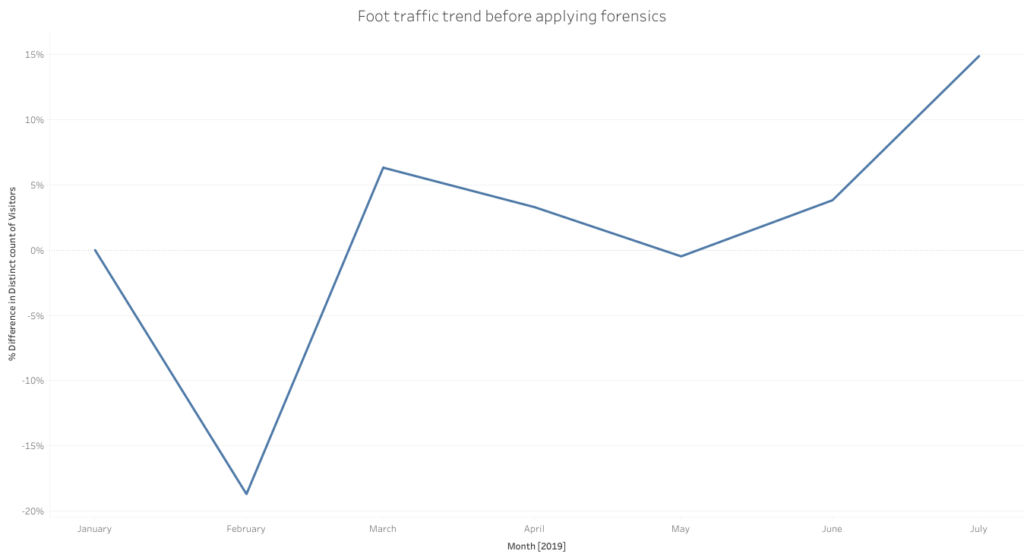
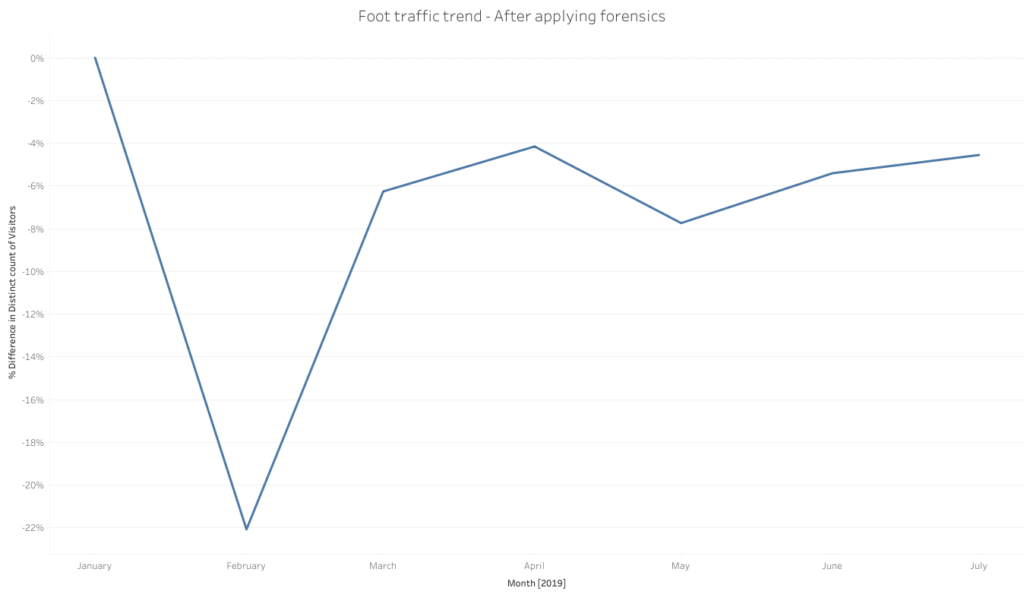
This type of location data-based foot traffic analysis is very common among our clients. While most location data providers do a good job of filtering out obviously problematic signals, such as those located at the exact center of the U.S., Gravy is the only location intelligence company to inspect and add a quality indicator, or forensic flag, to every signal record. Because there are good use cases for signals obtained from driving devices, signals with cell tower triangulation precision, and even spoofed signals, we share all of this information with our clients.
The choice of which data to use belongs to our clients because – as any analyst will tell you – the results will only be as good as the underlying data used. In this example, failing to filter out location signals due to driving delivers wholly erroneous results. Moreover, calculations for behavioral analysis, such as the distance visitors traveled, would have included the 15% of devices that never visited the shopping center, further skewing the results. It’s not hard to imagine a business making some pretty misguided decisions based on the results of such an analysis.
Don’t build your analysis on problematic data. Be sure to choose a location intelligence provider who delivers location data with transparency.
Have concerns about problematic data? Gravy can work with you to make sure that you have verifiable and accurate data for your analyses. Request a consultation with a Gravy expert today.




